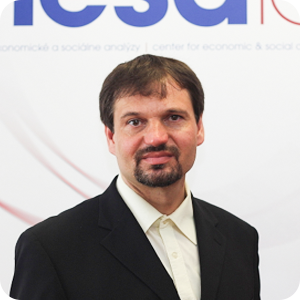The circular economy has become an extremely popular term in recent years. It is seen as a solution to the global environmental crisis and irrational resource use. Fewer raw materials, used in a wise way, zero waste, and less greenhouse gas emissions – this is what a circular economy entails, in a nutshell. This economic framework relies on renewable energy sources and materials, based on products with circular design, aiming to maximize the potential of digital technologies. Although in theory, it sounds great, this concept has both advantages and disadvantages. Check some of these out below.
Key Takeaways:
- Transitioning to a circular economy involves using more recycled inputs, reducing a company’s exposure to volatile raw material prices, and improving resilience.
- The global economy is 7.2% circular. The size of the circular economy market was valued at about US$553 billion in 2023.
- Finland has been a leader in circular economy innovation, followed by the Netherlands and Sweden.
- According to experts, the circular economy in international development offers environmental sustainability, resource efficiency, and job creation, but its successful implementation requires addressing challenges such as technological dependency, regulatory complexities, market disruptions, and the need for cultural and behavioral change.
DevelopmentAid: What are some of the advantages and disadvantages of the circular economy in international development?

“The circular economy in international development offers multifaceted advantages. Firstly, it promotes environmental sustainability by minimizing waste and reducing strain on ecosystems. Resource efficiency is a key benefit, as it extends the lifespan of products through practices such as recycling and refurbishing. This not only conserves valuable resources but also mitigates the negative impacts of traditional linear economies. Furthermore, the circular economy fosters job creation in sustainable sectors such as recycling, renewable energy, and eco-design. It encourages innovation by necessitating new approaches to product design, manufacturing, and consumption. Additionally, the shift towards renewable energies aligns with global efforts to combat climate change, contributing to a greener and more resilient future. However, challenges exist in the transition to a circular economy. Initial implementation costs can be high and potentially hinder widespread adoption. Resistance to change from industries accustomed to linear models may pose obstacles, and there is a risk of job losses in traditional sectors. Striking a balance between economic growth and environmental responsibility is crucial for the successful integration of the circular economy into international development.”

“The biggest problem of the current economy is that it constantly consumes more natural resources than it produces. Apart from being non-sustainable, such an approach can also have shorter-term negative effects even in “resource-rich” countries. Many examples, known as “resource curse”, can be provided, where countries with abundant natural resources tend to have less economic growth, less development, and less freedom. The “easy-to-access richness” promotes general corruption, violence, and rule by police or military regimes, which are only capable of maintaining stability. And as we have recently seen, more developed countries must be careful about allowing their economies to be dependent on buying resources from outside too. A circular economy can help to tackle this problem. Other benefits are a reduction of waste, or the focus on more lasting and thus higher-quality production, which can increase a nation’s reputation and competitiveness. Service economy from repairing, redesigning, refurbishing or even renting or sharing promotes a more stable and regionally balanced economy since it does not concentrate on production plants which must be often large to be competitive. Not everyone has the ability, skill or will to work in such plants which also requires more infrastructure and commuting from longer distances.”

“The circular economy, aimed at minimizing waste and making the most of resources, has significant potential for international development, particularly when combined with renewable energies and digital technologies. Here’s an overview of its advantages and disadvantages:
Advantages:
- Resource Efficiency: Promotes the efficient use of resources, reducing dependency on raw materials and mitigating environmental impact.
- Economic Growth and Job Creation: Can stimulate innovation and new business models, leading to job creation in sectors such as recycling, remanufacturing, and sustainable product design.
- Environmental Protection: By prioritizing renewable materials and energy, the circular economy helps in reducing greenhouse gas emissions and pollution, thereby protecting ecosystems.
- Sustainability: Encourages sustainable consumption patterns, contributing to long-term environmental health, which is essential for global development.
- Resilience: Reduces reliance on imported materials and improves a country’s resilience against global supply chain disruptions.
Disadvantages:
- Initial Costs: Transitioning to a circular model can involve significant upfront investments in technology and infrastructure which might be challenging for developing economies.
- Technological Dependency: Reliance on advanced digital technologies could widen the gap between developed and developing nations.
- Regulatory Challenges: Implementing and enforcing regulations that support circular economy practices can be complex and require extensive changes to existing legal frameworks.
- Market Dynamics: The shift could disrupt existing markets and industries, leading to short-term economic and social challenges such as job losses in traditional sectors.
- Cultural and Behavioral Change: Requires a substantial shift in consumer behavior and business practices which can be difficult to achieve and slow to evolve.
In summary, while a circular economy offers a pathway towards sustainable and inclusive growth, its successful implementation in international development contexts requires careful consideration of the economic, technological, and social factors.”
See also: The significance of sustainable cities in advancing global development | Experts’ Opinions
In 2024, DevelopmentAid celebrates 17 years of serving the global community. Over 6,500 job opportunities in the international development sector, 100k+ registered experts, and 300kK+ international development organizations, tenders, and grants for individuals, along with many other useful tools, are provided to you in order to help you to succeed in the field. By becoming an Individual Professional Member, you will unlock all that DevelopmentAid has put its soul into for almost two decades.

